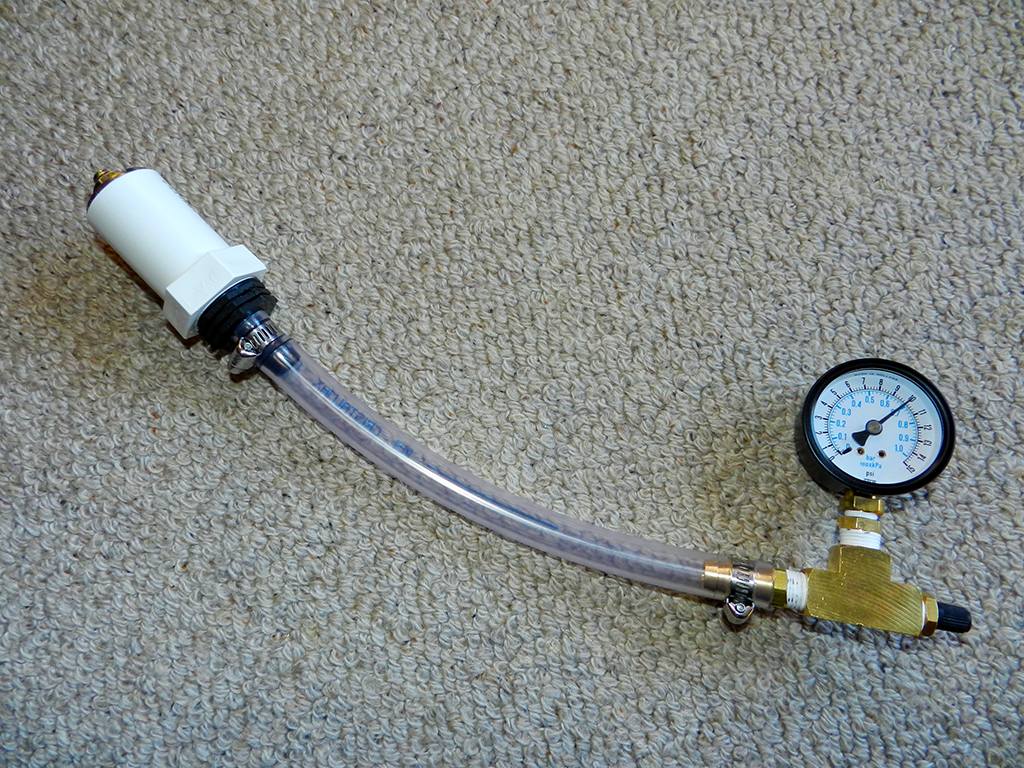Built my own version of bleed down tester. Waiting for my cylinder to come back from the machine shop so I can assemble the mill and try out my tester.
Parts list:
*1/4" air pressure gauge 0-60 psi (courtesy of work)
* 1/4" brass female T
* 1/4" x 1" long brass nipple
* 1/4" brass ball valve
* 3pcs- 1/4" mpt x1/4" barbs
* 1/4" fpt x 3/4" mpt brass adapter
* 3/4" fpt x 1" mpt steel adapter
* 1" pvc 90° threaded x slip
* 6" long piece of 1" pvc pipe
* 1/4" ID hose
* hose clamps
* blow gun
A little on the pricey to build , but very flexible and will be easy to use in frame or on bench.
Parts list:
*1/4" air pressure gauge 0-60 psi (courtesy of work)
* 1/4" brass female T
* 1/4" x 1" long brass nipple
* 1/4" brass ball valve
* 3pcs- 1/4" mpt x1/4" barbs
* 1/4" fpt x 3/4" mpt brass adapter
* 3/4" fpt x 1" mpt steel adapter
* 1" pvc 90° threaded x slip
* 6" long piece of 1" pvc pipe
* 1/4" ID hose
* hose clamps
* blow gun
A little on the pricey to build , but very flexible and will be easy to use in frame or on bench.


